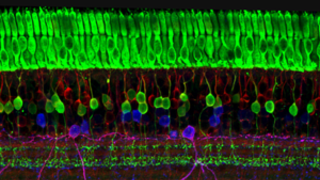
Other Retinal Conditions
Other Retinal Conditions
Batten disease
Also known as neuronal ceroid lipofuscinosis, refers to a group of rare inherited neurological conditions that can cause vision loss, progressive motor and cognitive decline, and seizures. There are different types of Batten disease, classified according to age at the onset of symptoms. Disease symptoms can be manifest at birth (congenital), or appear during childhood (infantile, late infantile, and juvenile) or adulthood. Childhood forms of Batten are the most common, often appearing between the ages of 5 and 10 as vision problems due to retinal degeneration or epilepsy (seizures) — or simply as problems with learning and general clumsiness.
Bietti crystalline dystrophy
Bietti crystalline dystrophy (BCD) is a rare autosomal recessive ocular disease that is characterized by yellow-white crystalline lipid deposits in the retina and sometimes cornea, degeneration of the retinal pigment epithelium (RPE), and sclerosis of the choroidal vessels. Progression of the disease ultimately results in reduced visual acuity, night blindness, visual field loss, and impaired color vision. Onset of the disease can occur from early teenage years to third decade of life, but can also occur beyond the third decade. As the disease progresses, decreases in peripheral acuity, central acuity or both ultimately results in legal blindness in most patients.
Blue-Cone Monochromacy
Blue cone monochromatism is characterized by poor central vision and color discrimination, infantile nystagmus, and nearly normal retinal appearance. The psychophysiologic functions of both rods and blue cones are preserved (Lewis et al., 1987). The frequency of achromatopsia is said to be approximately 1 in 100,000 persons. The first detailed description is that given by Huddart (1777). The subject of that report 'could never do more than guess the name of any color; yet he could distinguish white from black, or black from any light or bright color...He had 2 brothers in the same circumstances as to sight; and 2 brothers and sisters who, as well as his parents, had nothing of this defect.' This disorder was previously interpreted as total colorblindness. Information presented by Spivey (1965) indicated that affected persons can see small blue objects on a large yellow field and vice versa. These cases have been variously called partial complete colorblindness, or incomplete achromatopsia. Blackwell and Blackwell (1961) have described achromatopic families in which a few blue cones seemed to be present. See comments of Alpern et al. (1960). Sloan (1964) also had evidence of the presence of a few red cones in cases of otherwise complete achromatopsia. Bromley (1974) showed me a large kindred with this disorder in a typical X-linked recessive pattern.
Cohen syndrome
Cohen syndrome is a variable genetic disorder characterized by diminished muscle tone (hypotonia), abnormalities of the head, face, hands and feet, eye abnormalities, and non-progressive intellectual disability. Affected individuals usually have microcephaly, a condition in which head circumference is smaller than would be expected for an infant’s age and sex. In many older patients, obesity is present, especially around the torso and is associated with slender arms and legs. A lowered level of certain white blood cells known as neutrophils (neutropenia) is present from birth in some affected individuals. Cohen syndrome is an autosomal recessive genetic disease caused by mutations in the VPS13B/COH1 gene. Affected individuals may also have chorioretinal dystrophy, a condition characterized by abnormalities affecting the choroid and retina including degeneration of the retina.
Cone-Rod Dystrophy
Cone-rod retinal dystrophy (CRD) characteristically leads to early impairment of vision. An initial loss of color vision and of visual acuity is followed by nyctalopia (night blindness) and loss of peripheral visual fields. In extreme cases, these progressive symptoms are accompanied by widespread, advancing retinal pigmentation and chorioretinal atrophy of the central and peripheral retina (Moore, 1992). Evans et al. (1995) found complete blindness (no light perception) in only 3 of the 34 patients studied, and these 3 were all over 65 years of age. Serious effects on visual acuity (light perception only) were present in 10 other patients; however, their mean age was 60.3 years. All other patients retained some visual acuity. In many families, perhaps a majority, atrophy of the central and peripheral choreoretinal atrophy is not found (Tzekov, 1998).
The most common genes associated with cone-rod dystrophy are CNGA3, CNGB3, and RPGR.
Enhanced S-cone syndrome
Enhanced S-cone syndrome (ESCS) is an autosomal recessive retinopathy in which patients have increased sensitivity to blue light; perception of blue light is mediated by what is normally the least populous cone photoreceptor subtype, the S (short wavelength, blue) cones. People with ESCS also suffer vision loss, with night blindness occurring from early in life, varying degrees of L (long, red)- and M (middle, green)-cone vision, and retinal degeneration. The pattern of retinal dysfunction is a constant among ESCS patients, but the degree of clinically evident retinal degeneration can vary from minimal to severe. The condition is caused by mutations in the gene NR2E3.
Goldmann-Favre syndrome
Goldmann-Favre syndrome is the severe form of enhanced S-cone syndrome. It’s characterized by a liquefied vitreous body with preretinal band-shaped structures (veil), macular changes in the form of retinoschisis or edema, and pigmentary degeneration of the retina with problems with vision in bright light and extinguished electroretinogram. Cataracts are a complication.
Gyrate atrophy
Gyrate atrophy of the choroid and the retina is a rare autosomal recessive retinal dystrophy characterized by progressive chorioretinal degeneration, early cataract formation, and myopia. It is caused by a deficiency in the enzyme ornithine aminotransferase (OAT), which results in a 10- to 20-fold increase in plasma ornithine concentrations. Patients classically present in the first decade of life with night blindness, with fundus exam revealing characteristic circular patches of chorioretinal atrophy distributed in the peripheral fundus. As the disease progresses, the atrophic lesions coalesce and advance centripetally toward the posterior pole, correlating with progressive loss of peripheral vision. Macular involvement occurs late in the disease.
Heimler syndrome
Heimler syndrome (HS) is characterized by sensorineural hearing loss, tooth enamel hypoplasia, nail abnormalities, and occasional or late-onset retinal degeneration (macular dystrophy). HS-causing mutations in the PEX1 and PEX6 genes represent the mild end of the Zellweger syndrome spectrum disorders (ZSSD).
Joubert syndrome
Joubert syndrome is a rare genetic disorder in infants and children whose brains don’t develop correctly. A part of the brain called the cerebellar vermis, which controls balance and coordination, is either underdeveloped or absent. And the brain stem, which connects the brain and spinal cord, is also abnormal. Joubert syndrome can affect many different parts of the body. It can lead to multiple health problems, developmental delays, intellectual disability, and retinal degeneration.
Malattia Leventinese
Characteristically small round white spots (drusen) involving the posterior pole of the eye, including the areas of the macula and optic disc, appear in early adult life. Progression to form a mosaic pattern which Doyne (1899) aptly termed 'honeycomb' occurs thereafter. Doyne considered it to represent 'choroiditis.' However, Collins (1913) showed that the changes consisted of swelling in the inner part of Bruch membrane. Failing vision usually developed considerably later than the ophthalmologic change. Robert Walter Doyne (1857-1916) was an ophthalmologist in Oxford, England. Pearce (1967) did an extensive study of 6 kindreds living near Oxford. Some and possibly all may have been descendants from a common ancestor. Dominant inheritance with complete manifestation of the trait in persons surviving beyond early adult life was found. Families living elsewhere than England have been reported (see references given by Pearce, 1968). Maumenee (1982) suggested that this may be fundamentally the same disorder as drusen of Bruch membrane (126700).
North Carolina macular dystrophy
North Carolina macular dystrophy (NCMD) is a non-progressive autosomal dominant macular disorder of congenital or infantile onset characterized by loss of central vision, the accumulation of drusen in the macula and atrophy of photoreceptor cells with a variable phenotype at macular examination. The severity of changes in the development of the macula varies, causing some people to have little or no vision loss, while others may have severe vision loss.
Oguchi Disease
The characteristics are congenital, static hemeralopia and diffuse yellow or gray coloration of the fundus. After 2 or 3 hours in total darkness, the normal color of the fundus returns. The condition is more frequent in Japanese. See hemeralopia (310500) for a comment on the use of this term, as opposed to the term nyctalopia.
Pattern dystrophies
Pattern dystrophies are a group of autosomal dominant macular diseases characterized by various patterns of pigment deposition within the macula. The primary layer of the retina effected is the retinal pigment epithelium (RPE) which is responsible for removing and recycling waste within the retina. In various pattern dystrophies, these wastes accumulate in the form of lipofuscin. Pattern dystrophies are often associated with a relatively good visual prognosis, although slow progressive central vision loss can occur. Disease onset typically occurs in patients during their forties and fifties. However, older patients may be misdiagnosed as age-related macular degeneration due to similar macular patterns of pigment deposition.
Refsum disease
Refsum disease is an extremely rare and complex disorder that affects many parts of the body. A form of the retinal degenerative disease known as retinitis pigmentosa (RP) is a common feature of this disease.
Retinitis punctata albescens
Retinitis punctata albescens is a progressive form of autosomal recessive flecked retinopathy characterized by white punctata throughout the fundus (but sparing the macula in the early stages). Patients present with night blindness in childhood and may also experience a loss of visual acuity. Significant loss of vision is reported in the 5th and 6th decades of life.
Rod-Cone Dystrophy
Rod-cone dystrophy results from a primary loss of rod photoreceptors, followed by loss of cones.
Senior-Loken syndrome
Senior-Løken syndrome is a rare disorder characterized by the combination of two specific features: a kidney condition called nephronophthisis and the retinal condition Leber congenital amaurosis. SLS is inherited in an autosomal recessive pattern. Currently, 10 genes have been linked to the disorder.
Sorsby fundus dystrophy
Sorsby fundus dystrophy (SFD) is an inherited, macular degenerative disorder caused by mutations in the Tissue Inhibitor of Metalloproteinase-3 (TIMP3) gene. SFD closely resembles age-related macular degeneration (AMD), which is the leading cause of blindness in the elderly population of the Western hemisphere. Variants in TIMP3 gene have recently been identified in patients with AMD. Patients with this condition typically maintain normal acuity until their 40s when they develop severe, bilateral choroidal neovascular membranes.
Zellweger syndrome
Zellweger syndrome is one of a group of four related diseases called peroxisome biogenesis disorders (PBD). The diseases are caused by defects in any one of 13 genes, termed PEX genes, required for the normal formation and function of peroxisomes. Peroxisomes are cell structures that break down toxic substances and synthesize lipids (fatty acids. oils, and waxes) that are necessary for cell function. Peroxisomes are required for normal brain development and function and the formation of myelin, the whitish substance that coats nerve fibers. People with these disorders can have retinal degeneration.
To learn about clinical trials underway for retinal diseases, visit www.ClinicalTrials.gov.
Next Section
Jump to Section
Latest News
-
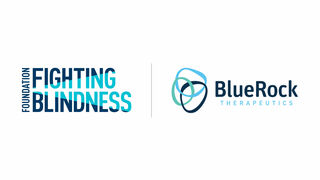
Mar 25, 2024
BlueRock Therapeutics and Foundation Fighting Blindness announce collaboration to expand the Uni-Rare natural history study of patients living with inherited retinal diseases
Foundation NewsCollaboration will add a new multi-gene cohort of patients living with inherited retinal diseases. Data insights from the new study cohort will inform the future clinical trial design for BlueRock’s pipeline of cell therapies for treating blindness.
-
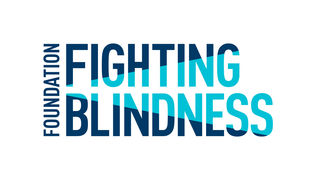
Feb 6, 2024
Foundation Fighting Blindness Launches GYROS, a Natural History Study for People with Gyrate Atrophy
Foundation NewsGyrate atrophy is an inherited retinal disease—causing progressive vision loss. GYROS results will help researchers design clinical trials for an emerging gyrate atrophy gene therapy.
-
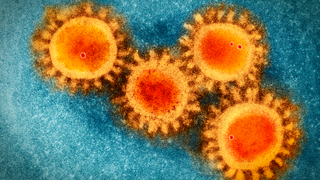
Mar 31, 2020
COVID-19 Resources
Foundation NewsThe Foundation Fighting Blindness is closely monitoring the COVID-19 situation and its impact on the IRD community.
-
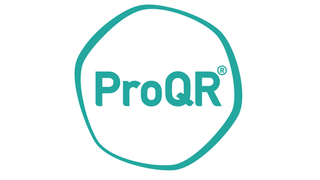
Feb 6, 2020
ProQR Therapeutics Teams Up with the Foundation Fighting Blindness and Blueprint Genetics to Support the My Retina Tracker® Program for People Living with Inherited Retinal Diseases
Foundation NewsMy Retina Tracker Program is the highest volume IRD genetic testing program in the U.S.
-
Oct 2, 2019
Blueprint Genetics, InformedDNA and the Foundation Fighting Blindness launch an open access program for patients with inherited retinal disease in the United States
Foundation NewsThe program will offer patients with inherited retinal disease no-cost genetic testing and genetic counseling in the United States. Look for updated information on how to participate to be posted in mid-October, with program registration starting shortly thereafter.
-
Aug 16, 2019
Foundation Fighting Blindness Investing Nearly $6.5 Million in New Grants
Foundation NewsThe newly funded research efforts include several therapies that have strong potential to treat a wide range of inherited retinal diseases.
-
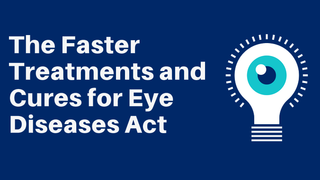
May 9, 2019
Foundation Fighting Blindness Endorses 'Eye Bonds' Legislation
Foundation NewsBipartisan Bill Will Stimulate Up to $1 Billion in New Funding for Blindness Research
-
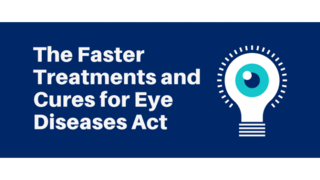
Jul 19, 2018
Foundation Fighting Blindness Urges Congress to Pass ‘Eye-Bonds’ Legislation
Foundation NewsBill Introduced in U.S. House Would Speed Up Cures for Blindness
-

Jun 8, 2018
Foundation Fighting Blindness and CheckedUp® Partner to Educate Retinal-Disease Patients About Research, Resources, and Emerging Therapies During Doctor Visits
Foundation NewsThe Foundation Fighting Blindness (the Foundation) and CheckedUp have formed a collaborative partnership to deliver patient-friendly diagnostic and disease-management information to people with retinal diseases such as age-related macular degeneration, retinitis pigmentosa, and Stargardt disease during their visits to eye doctors.




